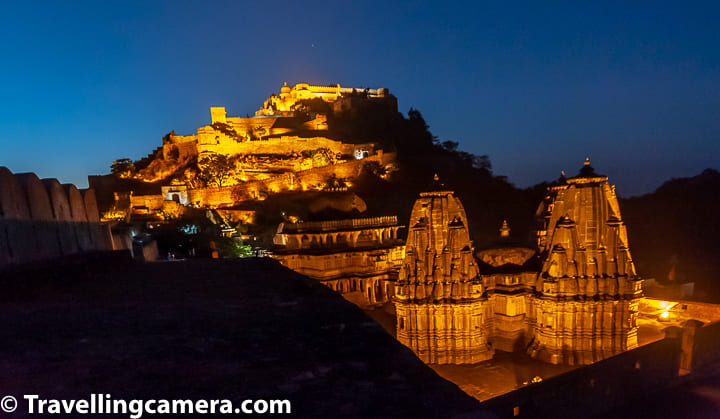
The magnificent palaces and formidable forts in Rajasthan are testimony to the legendary tales of Rajput honour and martial prowess. While the stories of hallowed sites like Chittorgarh, Jodhpur, Jaisalmer, and Jaipur are well-known, nestled within the Aravalli hills lies a hidden gem of Mewari splendour, Kumbhalgarh Fort. Located just over 80 kilometres from Udaipur, the Kumbhalgarh Fort is a sight to behold. It is one of the largest fort complexes in the world, with the longest wall fortification in India. However, its rich history comes alive at night during the light and sound show. Magical Mewari Might Kumbhalgarh’s impenetrable wall stands tall, with its thickness ranging from 15-25 feet. One can enter the complex through one of the seven imposing Pols (gates), flanked by the fort’s intimidating ramparts. If this doesn’t dissuade po- tential invaders, the ramp leading up to the hill is filled with sharp turns to dissuade charging elephants and cavalry. One would need at least a day to fully appreciate the might of this Rajput creation; Ram Pol, the complex’s main entrance, is itself a structure of strength and beauty. Kumbhalgarh houses several palaces and over 360 temples; prominent structures within the complex include the Kumbha Palace, Badal Mahal, Ganesha temple, and Parsva Natha temple. The Neel Kanth Mahadeva temple, in particular, draws a lot of visitors; its five-foot-high Shivling, and intricately carved domed ceiling, held aloft by 24 pillars, are exceptional examples of Rajput architecture. However, Kumbhalgarh’s main attraction is the light and sound show that happens each night, the entire complex is bathed in an orange and yellow glow, and the fort’s rich history is laid out through stories and dramatic voice re-enactments. Sight of the lights at night The show begins with stories about Rana Kumbha, the Mewari ruler who built the massive structure we see today. Legendary tales of his valour and battle prowess are recounted as the Kumbhalgarh lights up the crisp night sky. The story then progresses to an infant Udai Singh, Kumbha’s descendant and the crown prince who had to be hidden within the fort when Chittorgarh was under siege. Udai Singh eventually ascended the throne, and his eldest son was born in Kumbhalgarh, the most famous Rajput ruler, Maharana Pratap. The story follows Rana Pratap’s life with dramatic re-enactments of key moments. The scenes showing his separation from his brother Shakti Singh and Kumbhalgarh’s fall to Mughal invaders are masterfully done. However, the scene depicting Pratap’s defeat at Haldighati is exceptionally com- pelling, with the fort bathed in blue and green light. The show reaches its crescendo as Rana Pratap makes a triumphant return to his birthplace a few years later, the music swells, and Kumbhalgarh regains its orange hue once more. The entire performance finally winds down as Rana Pratap breathes his last. The entire complex is lit up as the narrator tells the audience that according to legend, Mughal emper- or Akbar had cried when the news of Pratap’s demise had reached his ears. The show then closes with live music from the local music group, and the fort walls are lit, adorning the entire hill in a bejeweled necklace. While the imposing complex is indeed impressive at all times, it is only after the show does on truly begin to comprehend the significance of the fort in Indian history and appreciate its story.
20 Apr 2023
Ananyanarayan Dhanabalan